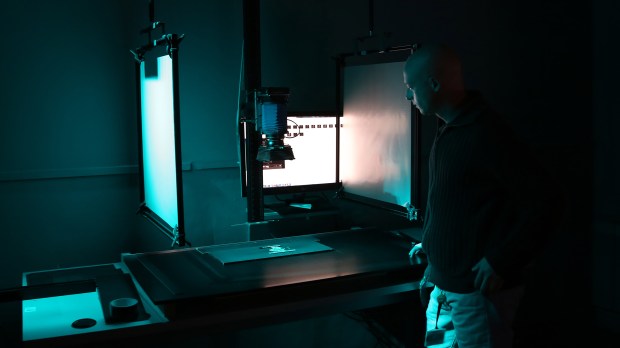Imagine finding a precious heirloom in your attic and not being able to look at it. Perhaps it’s a long-lost letter to your ancestor from President Abraham Lincoln, thanking him for his extraordinary valor in the War Between the States.
You’ve long heard of this precious piece of family history, and you are thrilled to discover that it was not, after all, lost.
But, as you begin to open it, you soon realize that if you go any further, the delicate, time-worn paper is just going to crumble and it will be practically worthless. So close, yet so far.
That is perhaps something of the feeling archaeologists had when they discovered certain scrolls in Qumran—the so-called Dead Sea Scrolls. Some of the artifacts were so carbonized from age that if they were unrolled they would practically evaporate.
Fifty years ago, could the experts have imagined what technology might one day come along that would allow them to see the messages hidden inside? Whether they could or not, they decided that the best course was to set the scrolls aside and wait.
Finally, it appears, the wait has paid off. Computer scientists at the University of Kentucky, working with biblical scholars in Jerusalem, have used a computer to “unfurl a digital image of the scroll,” The New York Times reports.
What’s more exciting is that the new technique may make it possible to read other scrolls too brittle to be unrolled, including several Dead Sea scrolls and about 300 carbonized ones from the area of Mount Vesuvius.
What scientists found in the scroll were the first two chapters of the Book of Leviticus. That may not be earth-shattering, since we already know the text.
But what was revealing was the fact that the new text bears striking similarities to the Masoretic text, the definitive Jewish bible. That text was thought to originate in the Middle Ages. The new finding suggests that it already existed in the first century AD.
So how does it work? The Times explains:
Methods like CT scans can pick out blobs of ink inside a charred scroll, but the jumble of letters is unreadable unless each letter can be assigned to the surface on which it is written. Dr. Seales realized that the writing surface of the scroll had first to be reconstructed and the letters then stuck back to it. He succeeded in 2009 in working out the physical structure of the ruffled layers of papyrus in a Herculaneum scroll. He has since developed a method, called virtual unwrapping, to model the surface of an ancient scroll in the form of a mesh of tiny triangles. Each triangle can be resized by the computer until the virtual surface makes the best fit to the internal structure of the scroll, as revealed by the scanning method. The blobs of ink are assigned to their right place on the structure, and the computer then unfolds the whole 3-D structure into a 2-D sheet.
Some scholars are already thinking of the new technology’s application elsewhere in the ancient world, such as Herculaneum, destroyed by the volcanic eruption of Mount Vesuvius in A.D. 79.:
Richard Janko, a classical scholar at the University of Michigan, said the carbonized scrolls from Herculaneum were a small section of a much larger library at a grand villa probably owned by Julius Caesar’s father-in-law, Lucius Calpurnius Piso. Much of the villa is still unexcavated, and its library could contain long-lost works of Latin and Greek literature. Successful reading of even a single scroll from Herculaneum with Dr. Seales’s method would spur excavation of the rest of Piso’s villa, Dr. Janko said.

